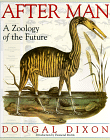
 |
Mutation, Metabolism &.
the 'Molecular Clock'?
| New Odyssey Magazine | Paleoanthropology | Aquatic Theory of Human Evolution | Paleozoology | Sci-Tech News |
 |
Mutation Rate in Humans & other Primates
Body Size, Metabolism, & the Rate of Mutation in Mammals & other Vertebrates
Mutation & Oxygen Free Radicals
New Odyssey Magazine | Aquatic Theory of Human Evolution | Paleozoology | Sci-Tech News |